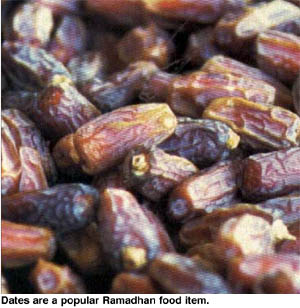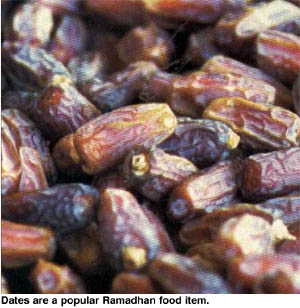
Plenty of variety when . . . Gathering around the Ramadhan table [Archives:2002/48/Culture]
November 25 2002
BY MAYASA MOHAMMED JAWAD
YEMEN TIMES STAFF
TAIZ
Every year Ramadhan comes to change the taste of life in the Muslim world. It’s as if stopping at a station to change our direction in life. In the holy month of Ramadhan, everything changes, even the taste of the meals which we are accustomed to during the other months. Ramadhan really re-gathers the family members and close relatives around the Ramadhan table.
Family habits

Foods, kitchen tools, and spices are the first things on the list. Ramadhan becomes a seasons of selling for the markets of spices in Yemen, which are available to suit the dishes offered in Ramadhan.
For the desserts made in Ramadhan, women buy raisins, almonds, pistachios and more. In addition, some women prefer to buy new kitchen items, such as plates, glasses and dishes to add the different shapes to the Ramadhan table.
Yemeni women prepare the traditional dishes of Ramadhan foods.
day meals
Alfatoor table is richer with different foods, drinks and desserts than the night meals.
Yemeni people are accustomed to have some distinguished Ramadhani foods and drinks including:
– Dates, which is the first thing man eats after fasting
– Shafoot, a distinguished Yemeni dish, made of flour and milk, and mixed with salad and spices.
– Fried food, such as Sanbosa, bagia, zalabia, and loqmat alkadi
– Hot drinks of tea or coffee after having dates, while the most famous cold drink is sheeted apricot juice.
– Desserts, among which are caramel, jelly, mohalabia, basbosa, rawani, and cake
– soup of chicken, and a meal of wheat with either sugar or salt. Soup is the best to have in Ramadhan for many Yemeni families.
——
[archive-e:48-v:2002-y:2002-d:2002-11-25-p:./2002/iss48/culture.htm]


